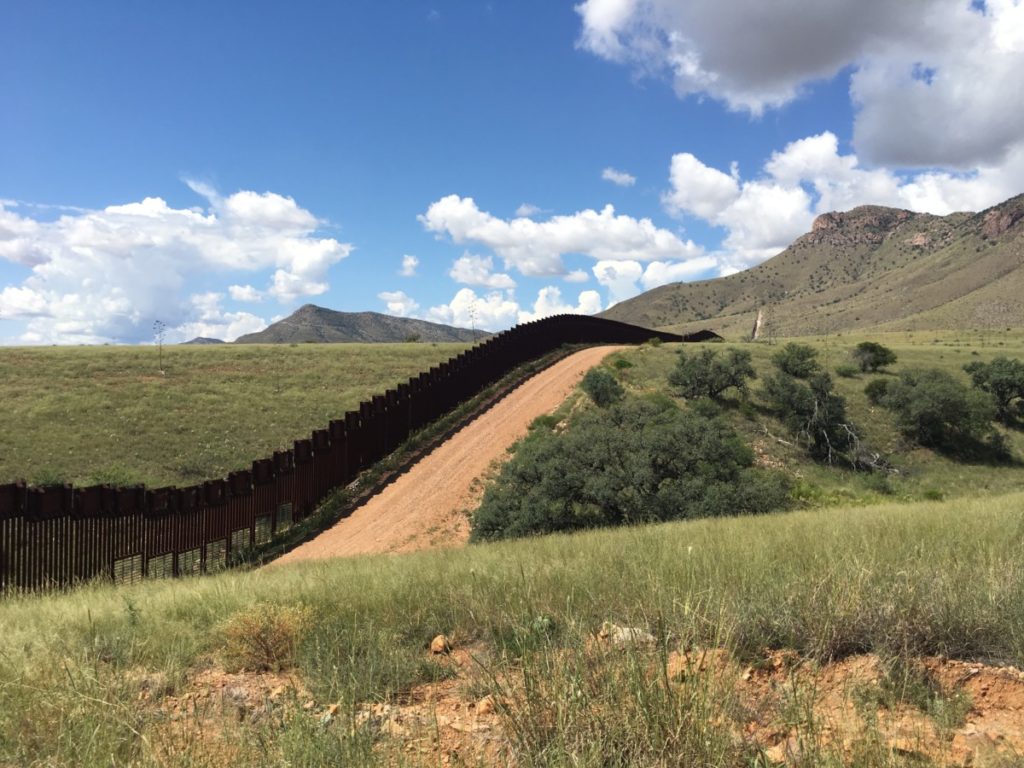In less than two weeks, President-elect Joe Biden and his council will assume office of the U.S. federal government. One of Biden’s many talking points during the election season was the border wall—and his promise that “not another foot” will be constructed under his watch (source: Washington Post).
Despite the few short days that are left for the Trump administration, wall construction along the southern U.S. border continues. Dozens of environmental regulations have been waived (source: Sierra Club) to make room for hundreds of miles of fast-paced construction, and our incredible landscapes, springs, and wildlife corridors are being destroyed. This mad dash to build a wall does not solve problems; instead, it severs wildlife from their habitats and Indigenous peoples from their ancestral lands.
We must hold the Biden administration accountable for its promise to stop border wall construction on day one. Sky Island Alliance and almost 100 other organizations, including the Center for Biological Diversity and the Southern Border Communities Coalition, ask Biden to keep his word and say “no more” by cancelling all border wall constructions and stopping construction.
We recognize there is much to be done in respect to the borderlands, both to reunite wildlife with their transboundary pathways and to heal a scarred and tense region. This is where we believe we need to start in order to see a positive change for all in southern Arizona and northern Sonora.
Timeline:
This is the timeline we urge the new administration to follow regarding the border wall and the region’s subsequent remediation.
On January 20:
1. Revoke President Trump’s emergency declaration and halt all wall construction.
In January:
2. Cancel all existing wall construction contracts and eminent domain proceedings.
3. Halt wall-related groundwater pumping to reduce pressure on critical springs and water sources.
In the first three months:
4. Reinstate the environmental laws and regulations that have been waived to build the border wall, including the National Environmental Policy Act (NEPA), the Endangered Species Act, and the Clean Water Act. Also, rescind any law waivers that have been issued.
5. Enact restoration in areas where the land has been damaged by roads and other construction to prep for wall placement. For example, in the Sky Islands restoration is desperately needed at Coronado National Memorial in the Huachuca Mountains, in the U.S. Forest Service land west of Nogales, in the San Pedro Riparian National Conservation Area, and in areas east of the San Bernardino National Wildlife Refuge near Guadalupe Canyon.
In the first year:
6. Begin removing priority wall sections that are either a) built in protected areas or b) that cause high levels of ecological or human community damages. In any place that wall is removed, work on restoring habitat and connectivity for wildlife.
7. Enact restoration efforts at any springs or water sources affected by groundwater pumping.
8. Reparate affected Native Nations. Consult with and compensate tribal nations and Indigenous peoples for the damages inflicted to their ancestral lands, communities, and cultural and historic sites during the border wall construction.
What We Can Do Now:
We need to make sure Biden’s “not another foot” doesn’t become his first broken promise.
Help us spread the word about the realities of the border wall and how it continues to rip apart communities, wildlife corridors, and landscapes. Here’s what you can do today:
- Call on the Biden-Harris administration to halt all wall construction immediately! Register for Thursday’s coffee break to learn about the wall’s status and how you can help.
- Ask Arizona Senators Kyrsten Sinema and Mark Kelley to step up, halt construction, and bring the entire border wall project under review. You can contact them here.
- Donate to keep Sky Island Alliance staff and volunteers in the field during this critical period.
- Follow us on social media (Facebook – Instagram – Twitter) and amplify our call using the hashtag #NotAnotherFoot.
- Join the Not Another Foot coalition at www.notanotherfoot.org and amplify their messages through your social media accounts and networks.
While Sky Island Alliance advocates for no more border wall, we are also hard at work studying the impact existing border wall has on water and wildlife in the region. Our Border Wildlife Study monitors which species are present in the borderlands and how wall construction will ultimately affect their cross-border migration as they search for food, shelter, and mates. Other conservation science is in progress as we work to heal and unite the Sky Island region. There is so much to do—and we are glad to be a part of it.

